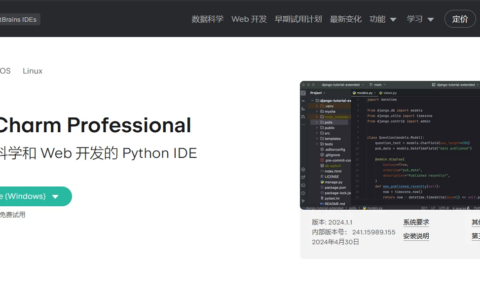fork
fork 函数创建子进程成功后,父进程返回子进程的 pid,子进程返回0。具体描述如下:
- fork返回值为-1, 代表创建子进程失败
- fork返回值为0,代表子进程创建成功,这个分支是子进程的运行逻辑
- fork返回值大于0,这个分支是父进程的运行逻辑,并且返回值等于子进程的 pid
我们看下通过 fork 系统调用来创建子进程的例子:
#include <stdio.h> #include <sys/types.h> #include <unistd.h> int main() { pid_t pid = fork(); if(pid == -1){ printf("create child process failed!\n"); return -1; }else if(pid == 0){ printf("This is child process!\n"); }else{ printf("This is parent process!\n"); printf("parent process pid = %d\n",getpid()); printf("child process pid = %d\n",pid); } getchar(); return 0; } 运行结果:
$ http://www.toutiao.com/a0/a.out This is parent process! parent process pid = 25483 child process pid = 25484 This is child process! 从上面的运行结果来看,子进程的pid=25484, 父进程的pid=25483。
在前面介绍内存缺页异常的时候,提到写时复制 COW 是一种推迟或者避免复制数据的技术,主要用在 fork 系统调用里,当执行 fork 创建新子进程时,内核不需要复制父进程的整个进程地址空间给子进程,而是让父进程和子进程共享同一个副本,只有写入时,数据才会被复制。我们用一个简单里的例子描述下:
#include <stdio.h> #include <sys/types.h> #include <unistd.h> int peter = 10; int main() { pid_t pid = fork(); if(pid == -1){ printf("create child process failed!\n"); return -1; }else if(pid == 0){ printf("This is child process, peter = %d!\n", peter); peter = 100; printf("After child process modify peter = %d\n", peter); }else{ printf("This is parent process = %d!\n", peter); } getchar(); return 0; } 执行结果:
$ http://www.toutiao.com/a0/a.out This is parent process = 10! This is child process, peter = 10! After child process modify peter = 100 从运行结果可以看到,不论子进程如何去修改 peter 的值,父进程永远看到的是自己的那一份。
vfork
接下来看下使用 vfork 来创建子进程:
#include <stdlib.h> #include <stdio.h> #include <sys/types.h> #include <unistd.h> int peter = 10; int main() { pid_t pid = vfork(); if(pid == -1){ printf("create child process failed!\n"); return -1; }else if(pid == 0){ printf("This is child process, peter = %d!\n", peter); peter = 100; printf("After child process modify peter = %d\n", peter); exit(0); }else{ printf("This is parent process = %d!\n", peter); } getchar(); return 0; } 运行结果:
$ http://www.toutiao.com/a0/a.out This is child process, peter = 10! After child process modify peter = 100 This is parent process = 100! 从运行结果中可以看出,当子进程修改了 peter=100 之后,父进程中打印 peter 的值也是100。
C/C++Linux服务器开发/后台架构师【零声教育】-学习视频教程-腾讯课堂
【文章福利】:小编整理了一些个人觉得比较好的学习书籍、视频资料共享在群文件里面,有需要的可以自行添加哦!~加入(需要自取)
pthread_create
现在我们知道了创建进程有两种方式:fork,vfork。那么创建线程呢?
线程的创建接口是用 pthread_create:
#include <pthread.h> #include <stdio.h> #include <sys/types.h> #include <unistd.h> #include <sys/syscall.h> int peter = 10; static pid_t gettid(void) { return syscall(SYS_gettid); } static void* thread_call(void* arg) { peter = 100; printf("create thread success!\n"); printf("thread_call pid = %d, tid = %d, peter = %d\n", getpid(), gettid(), peter); return NULL; } int main() { int ret; pthread_t thread; ret = pthread_create(&thread, NULL, thread_call, NULL); if(ret == -1) printf("create thread faild!\n"); ret = pthread_join(thread, NULL); if(ret == -1) printf("pthread join failed!\n"); printf("process pid = %d, tid = %d, peter = %d\n", getpid(), gettid(), peter); return ret; } 运行结果:
$ http://www.toutiao.com/a0/a.out create thread success! thread_call pid = 9719, tid = 9720, peter = 100 process pid = 9719, tid = 9719, peter = 100 从上面的结果可以看出:进程和线程的 pid 都是相同的。当线程修改了 peter = 100 之后,父进程中打印 peter 的值也是100。
进程线程创建总图
上面介绍了用户态创建进程和线程的方式,以及各个方式的特点。关于其底层的实现本质,我们后面会详细讲解。这里先提供一下三者之间的关系,可见三者最终都会调用 do_fork 实现。
但是内核态没有进程线程的概念,内核中只认 task_struct 结构,只要是 task_struct 结构就可以参与调度。
2024最新激活全家桶教程,稳定运行到2099年,请移步至置顶文章:https://sigusoft.com/99576.html
版权声明:本文内容由互联网用户自发贡献,该文观点仅代表作者本人。本站仅提供信息存储空间服务,不拥有所有权,不承担相关法律责任。如发现本站有涉嫌侵权/违法违规的内容, 请联系我们举报,一经查实,本站将立刻删除。 文章由激活谷谷主-小谷整理,转载请注明出处:https://sigusoft.com/16503.html









